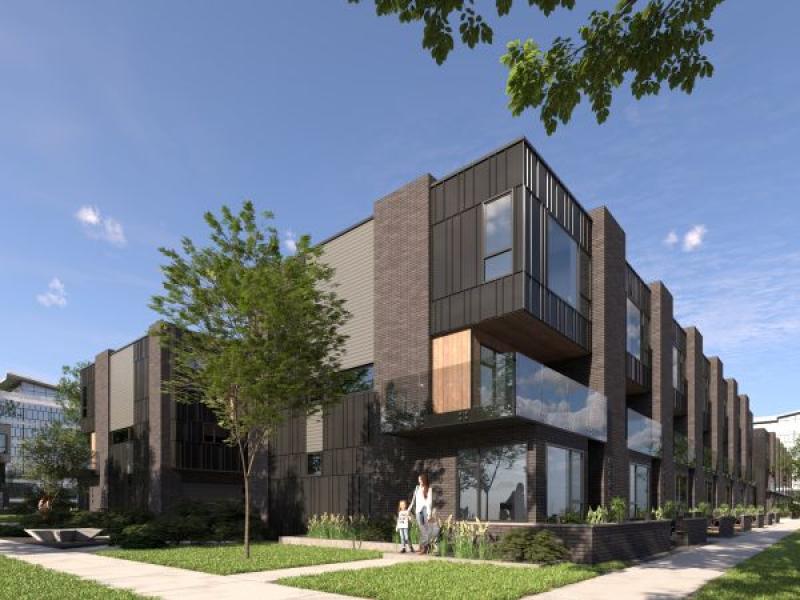
Statistics Canada’s vacant land surveys for the Toronto and Ottawa census metropolitan areas (CMAs) overstate the land inventory compared to other surveys, according to a research fellow at Toronto Metropolitan University.
Compared to a residential land inventory from Markham-based planning consultancy Malone Given Parsons (MGP) for the Toronto CMA, Statistics Canada reports over 70,000 acres of additional vacant land in the region.
In Ottawa, the StatCan survey reports almost 120,000 more acres of vacant land than the City of Ottawa’s own inventory.
The findings from Frank Clayton, a senior research fellow at the university’s Centre for Urban Research and Land Development, suggests Statistics Canada’s data collection on vacant residential land needs improvement, he wrote in the blog post titled Statistics Canada Vacant Residential Land Estimates for Toronto and Ottawa Metropolitan Areas: A Baby Step Forward.
“If Statistics Canada is gonna make progress in understanding this land supply situation it has to research this and get down much more into the nitty gritty into the detailed understanding of planning processes, and from a municipal perspective rather than a CMA perspective. You can’t build housing without the sites zoned and serviced,” he said in an interview with RENX Homes.
The disparity of land estimates
Statistics Canada’s vacant land acreage data was compared to residential land inventory data from MGP for Toronto from 2023 and the City of Ottawa’s 2021 vacant residential land survey.
MGP found 57,690 acres of vacant residential land in the Toronto CMA and none in the City of Toronto, while Statistics Canada found 131,000 acres of vacant residential land in the Toronto CMA and 2,750 acres in the City of Toronto.
The disparity was even larger in Ottawa. The city's data pegs the vacant residential land for the City of Ottawa at 3,825 acres, while Statistics Canada says 123,000 acres is available.
“It doesn’t make any contribution,” Clayton said of the relevance of the Statistics Canada data.
Explaining the differences
Clayton attributes the disparities for the Toronto CMA as a matter of different definitions. The MGP figures count developable lands, while Statistics Canada considers gross land, he said.
The answer for the wide variances in Ottawa is less clear: “I just don’t understand Ottawa,” Clayton remarked.
Statistics Canada found more vacant land acreage in Ottawa than Toronto, despite Ottawa being a quarter of the population of Toronto. A warning light went off in Clayton’s head when he looked the data, he said.
Though Clayton says it is “wonderful” Statistics Canada has started to collect vacant land data, he said the methodology needs more refinement.
“It’s important that everyone gets on the same basis.”
Without an agreed-upon set of data, it could have implications on the ability of the municipalities and developers to provide housing supply, he continued.
The effect on housing
Local research on vacant land is important for homebuilding, Clayton said. Without accurate data on land that is zoned and serviced, housing cannot be built.
Clayton said Statistics Canada’s data does not cover whether the land is shovel-ready, and there has been no comprehensive study of land in the Greater Toronto Area since 2003, unlike Ottawa which publishes annual reports on land.
Having a better view of land supply pays dividends for housing supply and cost, Clayton said. Using RBC’s report on homeownership affordability, he compared Toronto and Ottawa. Ottawa’s affordability remained stable until fairly recently, but Toronto’s skyrocketed beginning in 2005.
The difference is attributable to how the City of Ottawa’s boundaries were, until recently, the same as the boundaries in the CMA. Toronto, on the other hand, has no municipal body that plans on a regional basis and no land data collection for CMA, he said.
Ottawa’s planning encourages city planners and politicians to think about the overall regional market, which means it can forecast demand and identify land shortages more quickly.
“You gotta measure, to manage things,” he quipped.
Clayton also said Ottawa is not affected by Growth Plan for the Greater Golden Horseshoe unlike Toronto, which means Ottawa is not impacted by a plan that changes with shifts in provincial governments.
Solutions for the disparity
To correct this identified disparity, Clayton recommends Statistics Canada “launch a research inquiry to improve its understanding of what is included in the vacant residential land estimates obtained from its data sources and how they relate to vacant land estimates as used in land-use planning.”
But he does concede in the report it is Statistics Canada’s first attempt at quantifying greenfield land available for housing construction. It may develop into a more comprehensive dataset for vacant residential land in the future which includes information on land at various stages of the planning process, for example.










